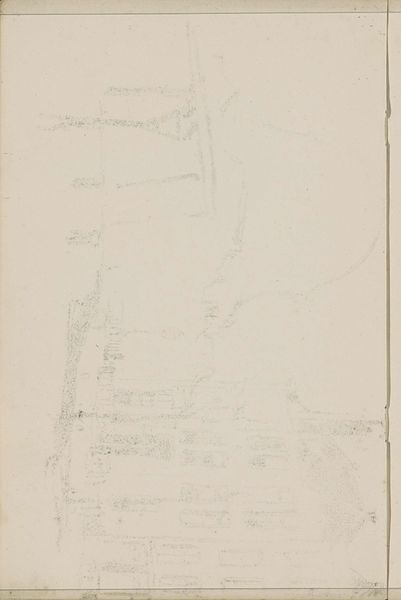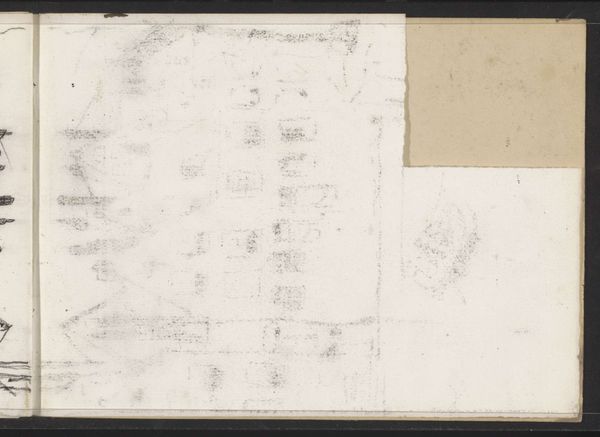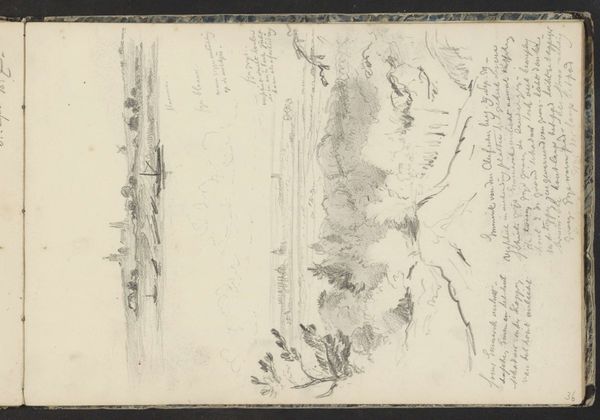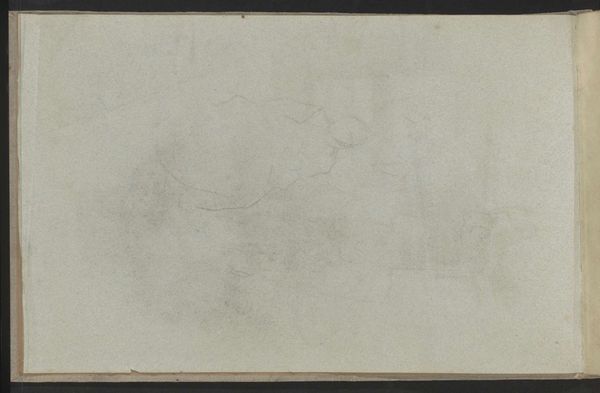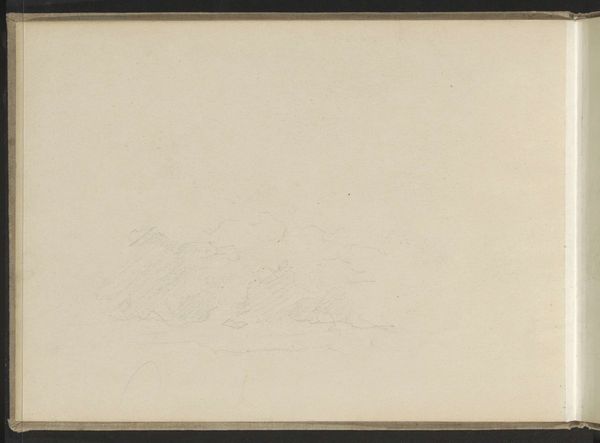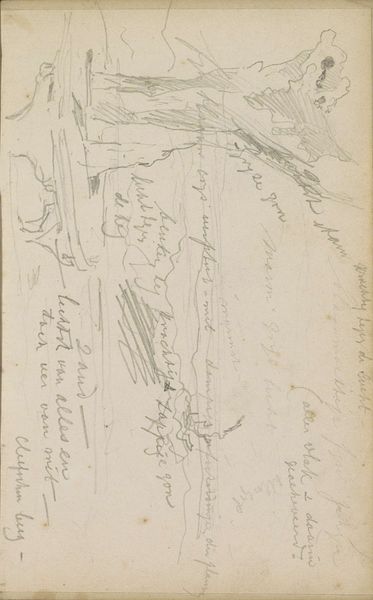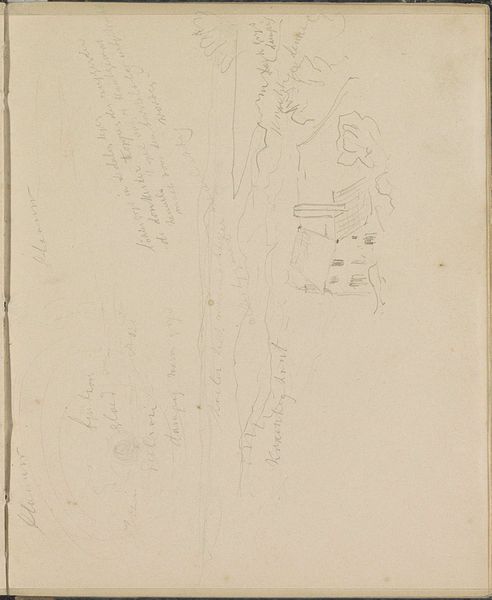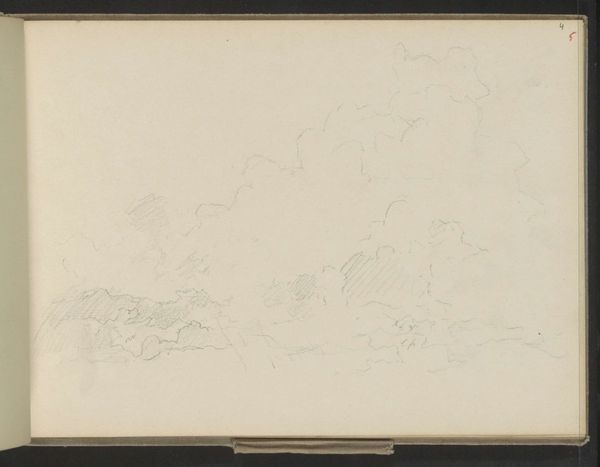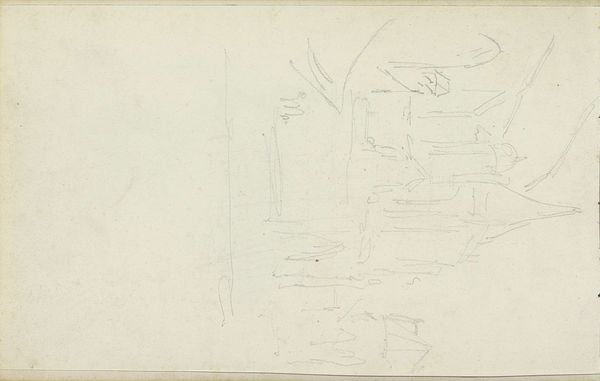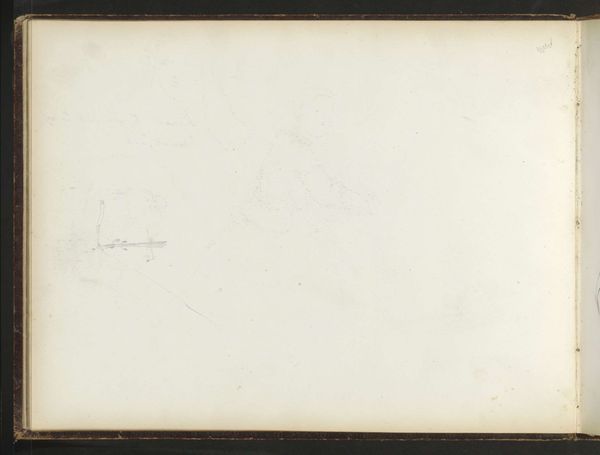
Copyright: Rijks Museum: Open Domain
Editor: So, this is "Abklatsch van de krijttekeningen op pagina 2" – a page of chalk drawings by Willem Witsen from around 1897-1898. It's faint, ghostlike almost. It reminds me of half-formed memories, something barely recalled. What stands out to you? Curator: The ephemeral quality, you see, invites us to consider the image not as a finished work, but as a trace of thought, a palimpsest of Witsen’s ideas. The smudging and near-illegibility contribute to its power, acting as a metaphor for the fleeting nature of perception itself. Does it remind you of anything specific? Editor: I guess... how sometimes we grasp at impressions rather than concrete details. What does it say, do you think, about how artists saw the world then? Curator: This impressionistic sketch is not merely representational; it actively evokes a mood, a sensory experience. Witsen isn't just showing us a place, he's giving us a feeling. The soft graphite suggests a sense of transience and perhaps even melancholy. But notice too the implied solidity within those hazy shapes. Can you sense a tension there, between the concrete and the ethereal? Editor: Yes, now that you mention it, I do. It's like the buildings are fading but their forms persist. What does the act of sketching mean within the whole cultural context? Curator: In a sketchbook, the artist isn't trying to create a lasting monument; the aim is discovery and immediate expression. The sketchbook itself becomes a container of raw potential, of impulses and experiments. Its inherent informality offered a visual diary, which, with time, grew to take on greater meaning. Do you agree it would've originally contained any such value? Editor: Absolutely. I suppose even unfinished thoughts are still a valuable record of the creative process. It really opens up what we consider "finished" art to be. Curator: Precisely. It reminds us that the power of an image lies not just in what it shows, but in what it suggests, the feelings it stirs, and the questions it raises about how we perceive and remember the world around us.
Comments
No comments
Be the first to comment and join the conversation on the ultimate creative platform.


